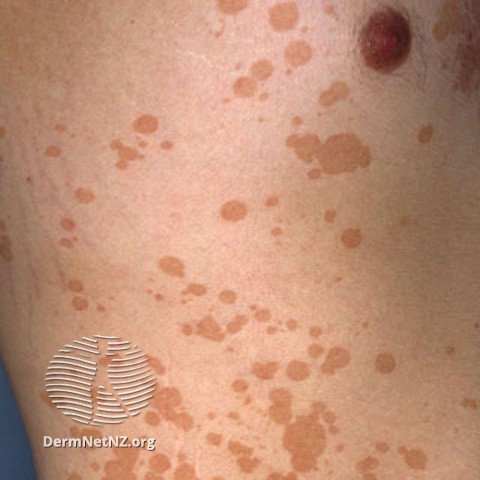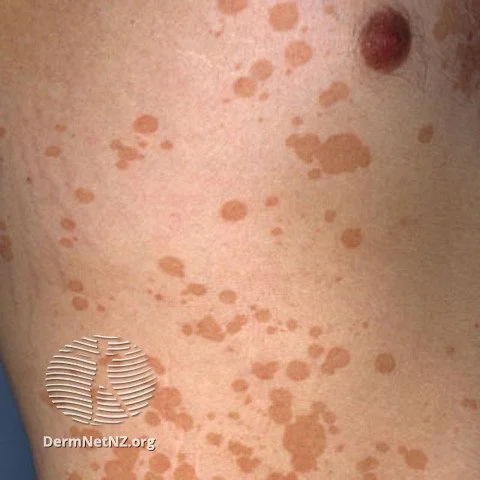
Tinea Versicolor (Pityriasis Versicolor)
Tinea versicolor can appear as patches of skin that is dry and scaly, and may appear as if the areas are not able to tan.
Credit: DermNet NZ
What is tinea versicolor?
Tinea versicolor is a common fungal skin infection that results in discolored, flaky patches. These patches can be either lighter or darker than the surrounding skin. The areas most frequently affected include the chest, back, abdomen, and the proximal parts of the extremities. This condition is most prevalent among young adults and is more common in regions with hot and humid climates. Though it can sometimes be confused with vitiligo, the causes and treatments for each are distinct.
What causes tinea versicolor?
The fungus Malassezia, present on most people's skin, is responsible for tinea versicolor. However, the exact reason why this fungus becomes overly active in certain areas, leading to tinea versicolor, remains unclear. One form of tinea versicolor, which lightens the skin, is believed to arise from a chemical the fungus produces, known as azelaic acid; this chemical can inhibit melanin production, leading to skin lightening. Another variant that results in darker or pinkish skin patches is attributed to skin irritation from the fungus. Interestingly, while individuals typically present with one of these types, it's possible for someone to experience both simultaneously.
What are the symptoms of tinea versicolor?
Manifestations of tinea versicolor can vary among individuals, but typical symptoms encompass:
Scaly skin patches
Clearly defined pale, tan, or pink skin patches. On darker skin, the pale patches are more frequently observed.
Mild itching, though this is uncommon
How do I treat tinea versicolor?
The severity of tinea versicolor dictates the treatment method. While mild cases can be managed with topical solutions, more pronounced cases might necessitate oral medications. Potential treatments include:
Topical antifungals such as ketoconazole, econazole, or terbinafine
Selenium sulfide lotion or shampoo
Ciclopirox cream or solution
Oral antifungal medications like fluconazole or itraconazole, especially for widespread or recurrent cases
Tinea versicolor can either show up as pink/brown darker patches or lighter patches depending on the skin tone.
Credit: DermNet NZ
Tinea versicolor generally likes to show up on sweaty areas, like along the bra line.
Credit: DermNet NZ



